Honeywell International Bundle
Who Really Controls Honeywell International?
Understanding the Honeywell International SWOT Analysis is key, but have you ever wondered who truly calls the shots at this industrial giant? From its humble beginnings to its current status as a global powerhouse, the evolution of Honeywell's ownership reveals fascinating insights. Knowing the Honeywell ownership structure is crucial for anyone looking to understand its strategic direction and future prospects.
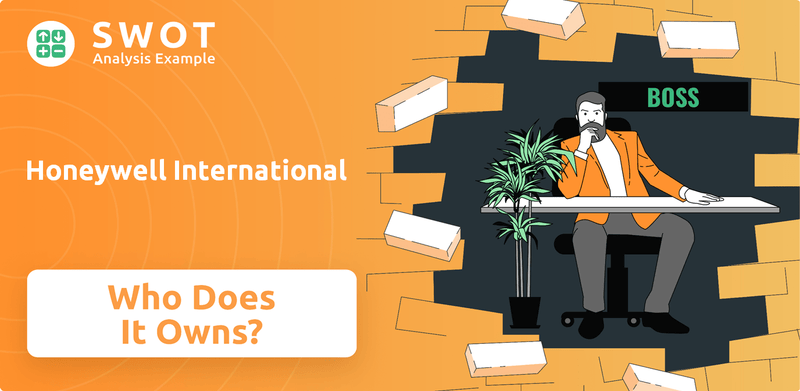
This exploration into "Who owns Honeywell" will uncover the dynamics behind Honeywell International owner, from its founders to the major shareholders shaping its destiny. We'll examine the impact of institutional investors and public shareholders on the Honeywell company's governance and strategic focus, providing a comprehensive view of Honeywell stock ownership and its implications. Discover how shifts in ownership have influenced the company's trajectory and its position in the market, including its leadership team and overall performance.
Who Founded Honeywell International?
The foundational ownership of the company, now known as Honeywell International, traces back to two pivotal figures: Albert M. Butz and Mark C. Honeywell. Their respective companies, established in the late 19th and early 20th centuries, laid the groundwork for the future conglomerate. This early ownership structure was critical in shaping the company's focus on technological innovation and market leadership.
In 1885, Albert M. Butz founded the Butz Thermo-Electric Regulator Company, which later became the Minneapolis Heat Regulator Co. in 1912. Simultaneously, Mark C. Honeywell established Honeywell Heating Specialty Co. Incorporated in 1906. These two companies, each with distinct areas of expertise, eventually merged, setting the stage for the modern corporation. The merger of these two companies was a strategic move that consolidated control within the emerging automated heating industry.
The merger in 1927 brought together the strengths of both entities, with Mark Honeywell becoming the first president of the newly formed Minneapolis-Honeywell Regulator Co. Although specific details on initial equity splits are not readily available, the merger was a significant event. The company's strategic expansion continued with the 1934 acquisition of Brown Instrument Co., broadening its technological scope. This acquisition was a key step in the company's growth, enhancing its capabilities in industrial controls. The early vision of Butz and Honeywell, centered on technological advancement, was crucial in shaping the company's product lines and market focus.
Understanding the early history of Marketing Strategy of Honeywell International is important to understand the Honeywell ownership structure. Here are some key points:
- 1885: Albert M. Butz establishes Butz Thermo-Electric Regulator Company.
- 1906: Mark C. Honeywell founds Honeywell Heating Specialty Co. Incorporated.
- 1927: The merger of the two companies forms Minneapolis-Honeywell Regulator Co.
- 1934: Acquisition of Brown Instrument Co.
Honeywell International SWOT Analysis
- Complete SWOT Breakdown
- Fully Customizable
- Editable in Excel & Word
- Professional Formatting
- Investor-Ready Format
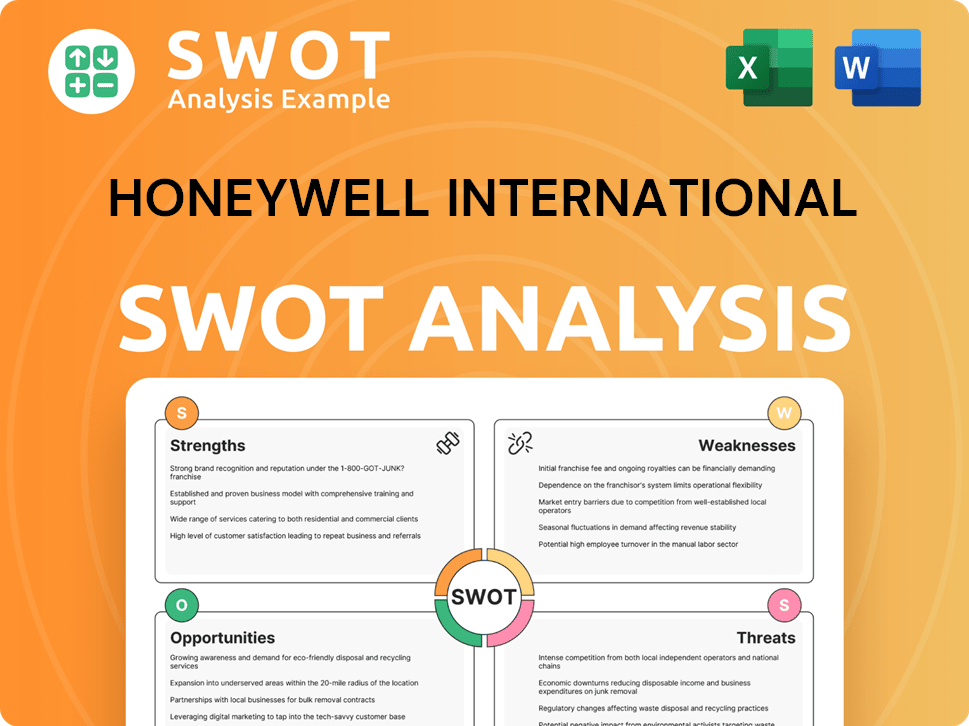
How Has Honeywell International’s Ownership Changed Over Time?
The ownership structure of Honeywell International has evolved significantly since its initial public offering (IPO) on January 2, 1970. The company, now a major player in the global market, has a market capitalization of approximately $144.15 billion as of June 2025. A pivotal moment in its ownership history was the 1999 merger with AlliedSignal Inc., which led to the formation of the current Honeywell International Inc. This merger reshaped the company's identity while retaining the well-established 'Honeywell' name.
As a publicly traded entity, Honeywell's ownership is largely dominated by institutional investors. These investors significantly influence company strategy and governance. The company's investor relations team actively communicates with these shareholders, providing information on performance and outlook, ensuring transparency and maintaining investor confidence. For more insights into the company's financial operations, you can explore the Revenue Streams & Business Model of Honeywell International.
| Ownership Category | March 2025 | April 2025 |
|---|---|---|
| Institutional Ownership | Approximately 83% | Approximately 79.89% |
| Insider Ownership | Approximately 0.70% | Approximately 0.04% |
| Retail Investors | Approximately 16.30% | Approximately 20.19% |
The Vanguard Group Inc. is the largest individual shareholder, holding 62.21 million shares, which represents 9.68% of the company, valued at about $14.08 billion as of June 2025. Other major institutional shareholders include BlackRock, Inc., State Street Corp, Morgan Stanley, and JPMorgan Chase & Co. The high percentage of institutional ownership underscores the importance of these investors in shaping the company's strategic direction and ensuring robust corporate governance.
Honeywell's ownership structure is primarily shaped by institutional investors, who hold a significant portion of the company's shares.
- Vanguard Group Inc. is the largest shareholder.
- Institutional investors' influence is critical in company strategy.
- Retail investors also hold a substantial portion of the shares.
- The company maintains active investor relations.
Honeywell International PESTLE Analysis
- Covers All 6 PESTLE Categories
- No Research Needed – Save Hours of Work
- Built by Experts, Trusted by Consultants
- Instant Download, Ready to Use
- 100% Editable, Fully Customizable
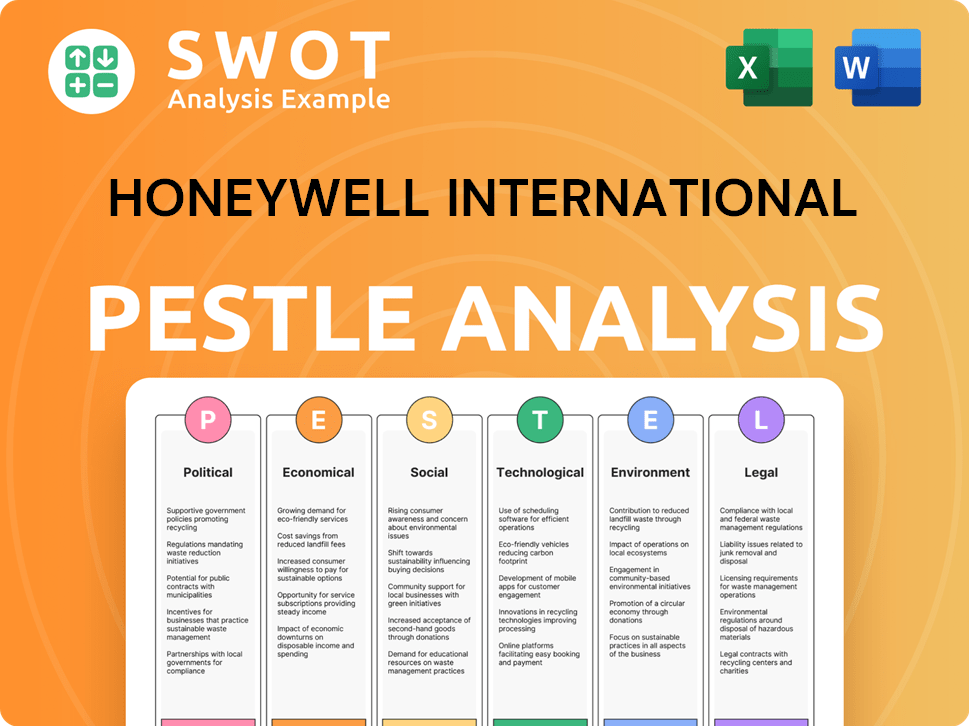
Who Sits on Honeywell International’s Board?
The current Board of Directors at Honeywell International Inc. is pivotal in guiding the company's strategic direction. As of February 2025, Vimal Kapur holds the positions of Chairman and CEO, directly influencing key executive appointments. Recent changes include the appointment of Mike Stepniak as the Senior Vice President and Chief Financial Officer, effective February 17, 2025, reporting to Kapur. Gregory P. Lewis transitioned to Senior Vice President, Transformation and Senior Advisor on the same date, also reporting to Kapur. Furthermore, Robin L. Washington resigned from the Board on March 31, 2025, and Su Ping Lu is set to become Senior Vice President and General Counsel on May 5, 2025, succeeding Anne T. Madden, who will become Senior Vice President, Portfolio Transformation and Senior Advisor.
The board's role includes overseeing the execution of the CEO's vision and aligning the company's portfolio with key megatrends. These leadership adjustments reflect the dynamic nature of the company's governance and strategic planning, especially as the company navigates significant changes in its operational structure. This is particularly relevant given the announced plans to split into three publicly traded companies by 2026, a move influenced by activist investor pressure.
| Board Member | Title | Date of Appointment (Approximate) |
|---|---|---|
| Vimal Kapur | Chairman and CEO | Ongoing |
| Mike Stepniak | Senior Vice President and CFO | February 17, 2025 |
| Gregory P. Lewis | Senior Vice President, Transformation and Senior Advisor | February 17, 2025 |
| Su Ping Lu | Senior Vice President and General Counsel | May 5, 2025 |
Honeywell operates under a one-share-one-vote structure, typical for publicly traded companies. Institutional holdings represent a significant portion of the company's ownership, approximately 83% as of March 2025. This structure means that the influence of major shareholders, such as institutional investors, is primarily exerted through their substantial holdings. This ownership structure is crucial for understanding the dynamics of Honeywell ownership and the influence of Honeywell shareholders. For more information on the competitive landscape, consider exploring the Competitors Landscape of Honeywell International.
Honeywell's ownership structure is primarily influenced by institutional investors, holding approximately 83% of the shares as of March 2025.
- Vimal Kapur serves as Chairman and CEO.
- The company is planning a split into three publicly traded entities by 2026.
- Activist investor Elliott Management took a significant stake in late 2024.
- Honeywell operates under a one-share-one-vote system.
Honeywell International Business Model Canvas
- Complete 9-Block Business Model Canvas
- Effortlessly Communicate Your Business Strategy
- Investor-Ready BMC Format
- 100% Editable and Customizable
- Clear and Structured Layout
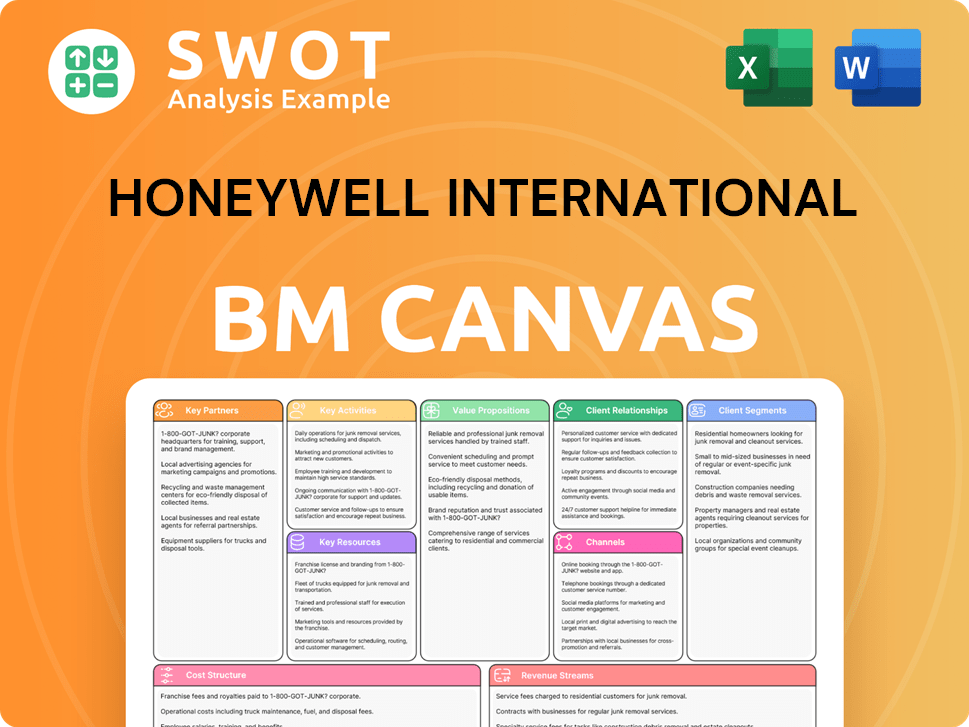
What Recent Changes Have Shaped Honeywell International’s Ownership Landscape?
Over the past few years, significant developments have reshaped the ownership profile of Honeywell International. A major announcement in February 2025 revealed plans to split into three independent, publicly traded companies by the second half of 2026. This strategic move follows pressure from activist investors like Elliott Management, which acquired a substantial stake in late 2024. Elliott Management believes this restructuring could increase Honeywell's valuation by up to 75% over the next two years.
In terms of mergers and acquisitions, the company has been actively managing its portfolio. In June 2024, Honeywell completed the acquisition of Carrier Global Corporation's Global Access Solutions business for $4.95 billion. Simultaneously, the company has been divesting certain assets, such as its personal protective equipment (PPE) business, slated for completion in the first half of 2025. These actions reflect a strategic focus on core business areas and enhancing shareholder value.
| Metric | Data | Date |
|---|---|---|
| Institutional Ownership | Approximately 83% | March 2025 |
| The Vanguard Group Inc. Ownership | 9.68% | June 2025 |
| Insider Holdings | 0.70% | Early 2025 |
| Insider Holdings | 0.04% | April 2025 |
Institutional ownership continues to dominate, accounting for around 83% of the company as of March 2025. The Vanguard Group Inc. remains the largest institutional shareholder, holding 9.68% of the shares as of June 2025. These trends, along with the ongoing restructuring and strategic acquisitions, provide insights into the evolution of Honeywell's growth strategy and its impact on the company's ownership structure.
Honeywell's ownership is primarily institutional, with a significant portion held by institutional investors. The Vanguard Group Inc. is a major shareholder. Insider ownership is relatively small, indicating that the company is largely controlled by external investors.
The Vanguard Group Inc. is a key institutional shareholder. Other institutional investors also hold significant portions of the company's stock. Understanding who owns Honeywell provides insight into the company's strategic direction.
The planned split into three independent companies and strategic acquisitions such as the Global Access Solutions business are recent key developments. Leadership changes, including the appointment of a new CFO, also reflect the company's evolution. Honeywell's ownership is influenced by these corporate actions.
Elliott Management's investment and advocacy for a breakup highlight the influence of activist investors. Their involvement underscores the focus on unlocking shareholder value through strategic restructuring. This has implications for Honeywell International owner.
Honeywell International Porter's Five Forces Analysis
- Covers All 5 Competitive Forces in Detail
- Structured for Consultants, Students, and Founders
- 100% Editable in Microsoft Word & Excel
- Instant Digital Download – Use Immediately
- Compatible with Mac & PC – Fully Unlocked
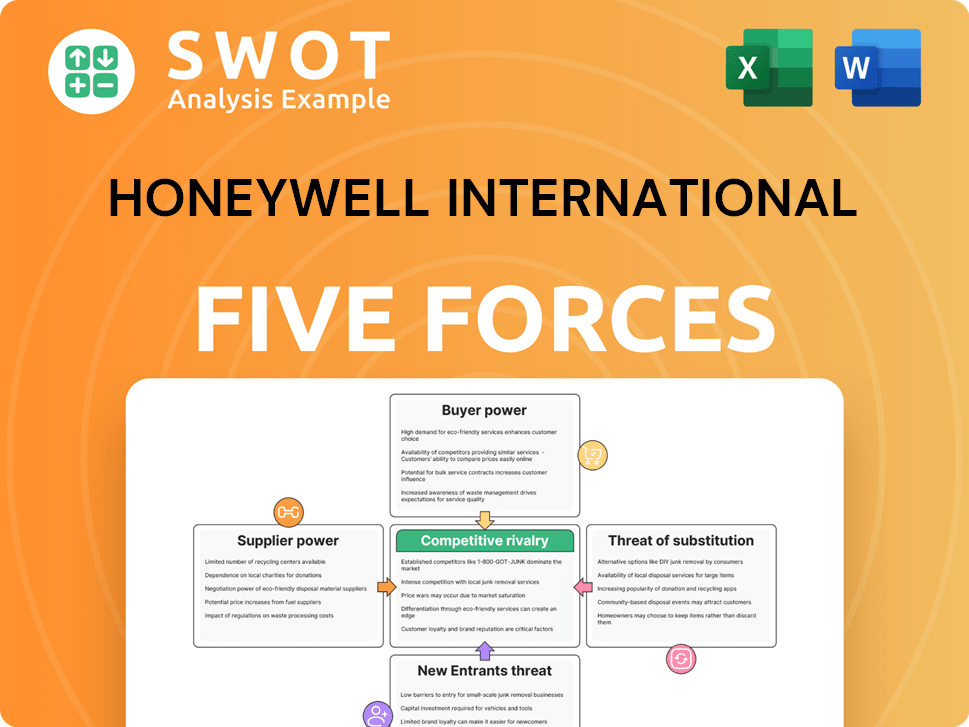
Related Blogs
- What are Mission Vision & Core Values of Honeywell International Company?
- What is Competitive Landscape of Honeywell International Company?
- What is Growth Strategy and Future Prospects of Honeywell International Company?
- How Does Honeywell International Company Work?
- What is Sales and Marketing Strategy of Honeywell International Company?
- What is Brief History of Honeywell International Company?
- What is Customer Demographics and Target Market of Honeywell International Company?
Disclaimer
All information, articles, and product details provided on this website are for general informational and educational purposes only. We do not claim any ownership over, nor do we intend to infringe upon, any trademarks, copyrights, logos, brand names, or other intellectual property mentioned or depicted on this site. Such intellectual property remains the property of its respective owners, and any references here are made solely for identification or informational purposes, without implying any affiliation, endorsement, or partnership.
We make no representations or warranties, express or implied, regarding the accuracy, completeness, or suitability of any content or products presented. Nothing on this website should be construed as legal, tax, investment, financial, medical, or other professional advice. In addition, no part of this site—including articles or product references—constitutes a solicitation, recommendation, endorsement, advertisement, or offer to buy or sell any securities, franchises, or other financial instruments, particularly in jurisdictions where such activity would be unlawful.
All content is of a general nature and may not address the specific circumstances of any individual or entity. It is not a substitute for professional advice or services. Any actions you take based on the information provided here are strictly at your own risk. You accept full responsibility for any decisions or outcomes arising from your use of this website and agree to release us from any liability in connection with your use of, or reliance upon, the content or products found herein.